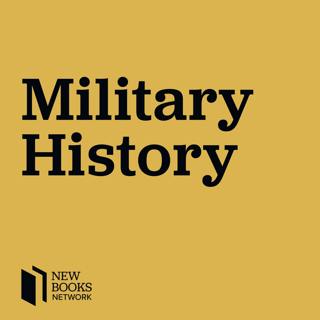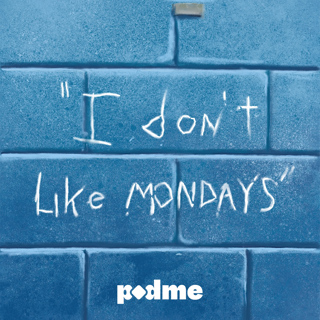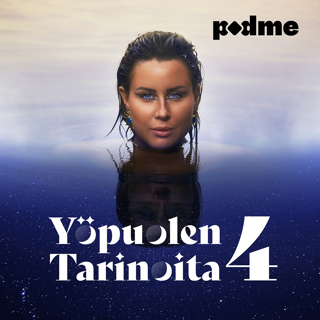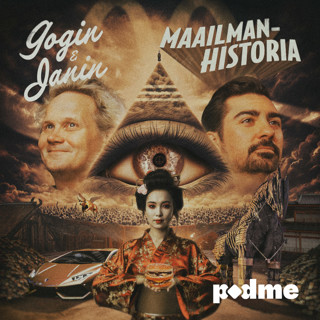
Luis L. Schenoni, "Bringing War Back In: Victory, Defeat, and the State in Nineteenth-Century Latin America" (Cambridge UP, 2025)
Bringing War Back In: Victory, Defeat, and the State in Nineteenth-Century Latin America (Cambridge UP, 2025) provides a fresh theory connecting war and state formation that incorporates the contingency of warfare and the effects of war outcomes in the long run. The book demonstrates that international wars in nineteenth-century Latin America triggered state-building, that the outcomes of those wars affected the legitimacy and continuity of such efforts, and that the relative capacity of states in this region today continues to reflect those distant processes. Combining comparative historical analysis with cutting edge social science methods, the book provides a comprehensive picture of state formation in nineteenth-century Latin America that is compelling for readers across disciplines, breathes new life into bellicist approaches to state formation, and offers a novel framework to explain variation in state capacity across Latin America and the world. Learn more about your ad choices. Visit megaphone.fm/adchoices Support our show by becoming a premium member! https://newbooksnetwork.supportingcast.fm/military-history
2 Loka 1h 1min

Robert F. Williams, "The Airborne Mafia: The Paratroopers Who Shaped America's Cold War Army" (Cornell UP, 2025)
The Airborne Mafia: The Paratroopers Who Shaped America's Cold War Army (Cornell UP, 2025) explores how a small group of World War II airborne officers took control of the US Army after World War II. This powerful cadre cemented a unique airborne culture that had an unprecedented impact on the Cold War US Army and beyond. Robert F. Williams reveals the trials and tribulations this group of officers faced in order to bring about their vision. He spotlights the relationship between organizational culture, operational behavior, and institutional change in the United States Army during the Cold War, showing that as airborne officers ascended to the highest ranks of the army they transmitted their culture throughout their service in four major ways—civil-military relations, preparation for potential atomic combat, helicopter airmobility, and strategic response forces. Experiences of training and commanding airborne divisions in World War II led these men to hold sway in army doctrine by the mid-1950s. Dominating institutional thought and imparting their values, beliefs, and norms throughout the service they enjoyed a special privilege within the group culture. Williams demonstrates this impact, privilege, and power by focusing on the paratrooper triumvirate of Matthew Ridgway, Maxwell Taylor, and James Gavin and the lasting impression they made on how the US Army fought. The Airborne Mafia illuminates the power subcultures can have in changing their parent cultures over time, particularly one as set in its ways and as large as the US Army. With a deft touch, deep research, and an unwavering eye for the human stories behind organizational change, Williams helps explain the existence and importance of the paratrooper mystique that remains within the military still today. Former paratrooper Robert F. Williams analyzes masterfully the origins, development, and impact of a small but very influential group of airborne leaders in the decades following WWII. I witnessed this dynamic in both peace and war, and Williams captures the subject superbly. The Airborne Mafia is a must-read for soldiers, scholars, policymakers, and history buffs who want to learn how culture can so significantly influence an organization. Cutting through the outsized myths of one of the US Army's most storied units, Williams delivers a groundbreaking study of the airborne and its soldiers. An incredibly well-told tale of operational innovation, institutional leadership, and cultural persuasion, The Airborne Mafia will no doubt be a go-to book for those interested in an organizational history of the US armed forces during the Cold War era. The Airborne Mafia is a significant contribution to military history. Williams has worked carefully with culture as a driving force in this book. He reveals and fully appreciates how the actions and thoughts of World War II airborne generals shaped the institution into the 21st century. Williams uses the analytical lens of airborne—as a warfighting concept and as individuals dedicated to it—to examine how military institutions change over time. The Airborne Mafia does a phenomenal job articulating how this particular subculture and its vital undercurrents first coalesced and then unified into a powerful force. General David Petraeus, US Army (Ret.)Gregory A. Daddis, author of Pulp VietnamIngo Trauschweizer, author of Maxwell Taylor's Cold WarWilliam A. Taylor, author of Every Citizen a Soldier Learn more about your ad choices. Visit megaphone.fm/adchoices Support our show by becoming a premium member! https://newbooksnetwork.supportingcast.fm/military-history
1 Loka 41min

M. G. Sheftall, "Nagasaki: The Last Witnesses" (Penguin Random House, 2025)
Nagasaki: The Last Witnesses (Penguin Random House, 2025) is the second volume in a prize-worthy two-book series based on years of irreplicable personal interviews with survivors about each of the atomic bomb drops, first in Hiroshima and then Nagasaki, that hastened the end of the Pacific War. On August 6, 1945, the United States unleashed a weapon unlike anything the world had ever seen. Then, just three days later, when Japan showed no sign of surrender, the United States took aim at Nagasaki.Rendered in harrowing detail, this historical narrative is the second and final volume in M. G. Sheftall’s series Embers. Sheftall has spent years personally interviewing hibakusha—the Japanese word for atomic bomb survivors. These last living witnesses are a vanishing memory resource, the only people who can still provide us with reliable and detailed testimony about life in their cities before the use of nuclear weaponry.The result is an intimate, firsthand account of life in Nagasaki, and the story of incomprehensible devastation and resilience in the aftermath of the second atomic bomb drop. This blow-by-blow account takes us from the city streets, as word of the attack on Hiroshima reaches civilians, to the cockpit of Bockscar, when Charles Sweeney dropped “Fat Man,” to the interminable six days while the world waited to see if Japan would surrender to the Allies–or if more bombs would fall. Related Genres: Asian World History, 1950 – Present Military History, World War II Military History Praise for M.G. Sheftall’s Embers Series: “Sheftall’s meticulous, novelistic recreations are deeply immersive. It’s an invaluable contribution to 20th century history.”—Publishers Weekly on Nagasaki (Embers: Volume II) (starred review)“A definitive account of a watershed moment in history.”—Kirkus on Nagasaki (Embers: Volume II)“M.G. Sheftall’s Hiroshima presents as a master class in eyewitness storytelling. As poignant as it is powerful, this gripping narrative chronicles one of history’s darkest nightmare moments—the atomic bombing of Hiroshima in August 1945—and the memories of its surviving eyewitnesses. As the events fade from living memory, Hiroshima is at once a brilliant tribute and a cautionary tale.”—Annie Jacobsen, author of Nuclear War: A Scenario“An important, deep-dive book into most every detail about the atomic bomb’s making and use, in anger. A strong argument for why it must never be allowed to be used for any reason whatsoever. This book adds significantly to the argument that we need to back up fast and return to nuclear arms reduction.”—Charles Pellegrino, author of To Hell and Back: The Last Train from Hiroshima“M.G. Sheftall takes us on a deep dive into one of the most significant and horrific events in world history. Hiroshima is a gripping, moving story of fear and shame, courage and grace, and a powerful argument that we should never, ever use these weapons again.”—Evan Thomas, author of Road to Surrender: Three Men and the Countdown to the End of World War II“A compelling analysis of the suffering endured by the citizens of Hiroshima in the aftermath of the dropping of the nuclear bomb on 6 August 1945. Written by a scholar who lives and works in Japan, and who has interviewed many of the last survivors, this is a book that offers valuable insights into Japanese thinking during the war and the subsequent struggle to rebuild the country.”—Laurence Rees, author of Auschwitz and The Holocaust Learn more about your ad choices. Visit megaphone.fm/adchoices Support our show by becoming a premium member! https://newbooksnetwork.supportingcast.fm/military-history
1 Loka 53min

Kolby Hanson, "Ordinary Rebels: Rank-And-File Militants Between War and Peace" (Oxford UP, 2025)
In Ordinary Rebels: Rank-And-File Militants Between War and Peace (Oxford University Press, 2025), Kolby Hanson argues that these periods of state toleration do not simply change armed groups' behavior, but fundamentally transform the organizations themselves by shaping who takes up arms and which leaders they follow. This book draws on a set of innovative experimental surveys and 75 in-depth interviews tracing four armed movements over time in Northeast India and Sri Lanka. A powerful new theory of how conditions shape the trajectory of non-state armed groups, this book reshapes our understanding of why such organizations become more moderate over time. Learn more about your ad choices. Visit megaphone.fm/adchoices Support our show by becoming a premium member! https://newbooksnetwork.supportingcast.fm/military-history
28 Syys 42min

Tiffany Earley-Spadoni, "Landscapes of Warfare: Urartu and Assyria in the Ancient Middle East" (UP Colorado, 2025)
Landscapes of Warfare: Urartu and Assyria in the Ancient Middle East (University Press of Colorado, 2025) offers an in-depth exploration of the Urartian empire, which occupied the highlands of present-day Turkey, Armenia, and Iran in the early first millennium BCE. Lesser known than its rival, the Neo-Assyrian empire, Urartu presents a unique case of imperial power distributed among mountain fortresses rather than centralized in cities. Through spatial analysis, the book demonstrates how systematic warfare, driven by imperial ambitions, shaped Urartian and Assyrian territories, creating symbolically and materially powerful landscapes. Tiffany Earley-Spadoni challenges traditional views by emphasizing warfare’s role in organizing ancient landscapes, suggesting that Urartu’s strength lay in its strategic optimization of terrain through fortified regional networks. Using an interdisciplinary approach that includes GIS-enabled studies and integrates archaeological, historical, and art-historical evidence, she illustrates how warfare was a generative force in structuring space and society in the ancient Middle East. Landscapes of Warfare situates Urartu’s developments within the broader context of regional empires, providing insights into the mechanisms of warfare, governance, and cultural identity formation. Learn more about your ad choices. Visit megaphone.fm/adchoices Support our show by becoming a premium member! https://newbooksnetwork.supportingcast.fm/military-history
28 Syys 39min

Michael Jabara Carley, "Stalin's Gamble: The Search for Allies Against Hitler, 1930-1936" (U Toronto Press, 2023)
Shedding light on the origins of the Second World War in Europe, Stalin's Gamble: The Search for Allies Against Hitler, 1930-1936 (University of Toronto Press, 2023) aims to create a historical narrative of the relations of the USSR with Britain, France, the United States, Poland, Germany, Italy, Czechoslovakia, and Romania during the 1930s. The book explores the Soviet Union's efforts to organize a defensive alliance against Nazi Germany, in effect rebuilding the anti-German Entente of the First World War. Drawing on extensive research in Soviet as well as Western archives, Michael Jabara Carley offers an in-depth account of the diplomatic manoeuvrings which surrounded the rise of Hitler and Soviet efforts to construct an alliance against future German aggression. Paying close attention to the beliefs and interactions of senior politicians and diplomats, the book seeks to replace one-sided Western histories with records from both sides. The book also offers an inside look at Soviet foreign policy making, with a focus on Stalin as a foreign policy maker as well as his interactions with his colleagues. Told in a fascinating narrative style, Stalin's Gamble attempts to see the European crisis of the 1930s through Soviet eyes. Michael Jabara Carley is a professor of history at the Université de Montréal. Learn more about your ad choices. Visit megaphone.fm/adchoices Support our show by becoming a premium member! https://newbooksnetwork.supportingcast.fm/military-history
26 Syys 1h 25min

Adrian Pole, "Making Antifascist War: The International Brigades' Transnational Encounters with Civil-War Spain, 1936-1939" (Cambridge UP, 2025)
Making Antifascist War: The International Brigades' Transnational Encounters with Civil-War Spain, 1936-1939 (Cambridge UP, 2025) is a study of the 35,000 antifascists who joined the International Brigades in order to defend the Second Spanish Republic and of their encounters with civil-war Spain. Dr. Adrian Pole offers the first in-depth history of the rich array of cross-cultural encounters which emerged between the multinational soldiers of all five International Brigades and the people, places, politics and culture of the country which accommodated them for almost three years of civil war. He sets out to recover the place of these encounters within the making, imagining and running of a transnational fighting force, showing how they influenced the volunteers' experiences and emotions, underlined their ideas and identities, informed their motivations and actions, and ultimately underpinned their ability to imagine, wage and justify the war. In doing so, he demonstrates how they enabled thousands of transnational actors to define a deeply contentious conflict in their own very particular terms. Learn more about your ad choices. Visit megaphone.fm/adchoices Support our show by becoming a premium member! https://newbooksnetwork.supportingcast.fm/military-history
24 Syys 55min

Deborah Willis, "The Black Civil War Soldier: A Visual History of Conflict and Citizenship" (NYU Press, 2025)
A stunning collection of stoic portraits and intimate ephemera from the lives of Black Civil War soldiers Though both the Union and Confederate armies excluded African American men from their initial calls to arms, many of the men who eventually served were black. Simultaneously, photography culture blossomed--marking the Civil War as the first conflict to be extensively documented through photographs. In The Black Civil War Soldier: A Visual History of Conflict and Citizenship (NYU Press, 2025), Deb Willis explores the crucial role of photography in (re)telling and shaping African American narratives of the Civil War, pulling from a dynamic visual archive that has largely gone unacknowledged. With over seventy images, The Black Civil War Soldier contains a huge breadth of primary and archival materials, many of which are rarely reproduced. The photographs are supplemented with handwritten captions, letters, and other personal materials; Willis not only dives into the lives of black Union soldiers, but also includes stories of other African Americans involved with the struggle--from left-behind family members to female spies. Willis thus compiles a captivating memoir of photographs and words and examines them together to address themes of love and longing; responsibility and fear; commitment and patriotism; and--most predominantly--African American resilience. The Black Civil War Soldier offers a kaleidoscopic yet intimate portrait of the African American experience, from the beginning of the Civil War to 1900. Through her multimedia analysis, Willis acutely pinpoints the importance of African American communities in the development and prosecution of the war. The book shows how photography helped construct a national vision of blackness, war, and bondage, while unearthing the hidden histories of these black Civil War soldiers. In combating the erasure of this often overlooked history, Willis asks how these images might offer a more nuanced memory of African-American participation in the Civil War, and in doing so, points to individual and collective struggles for citizenship and remembrance. Learn more about your ad choices. Visit megaphone.fm/adchoices Support our show by becoming a premium member! https://newbooksnetwork.supportingcast.fm/military-history
24 Syys 35min





















